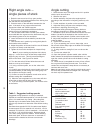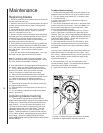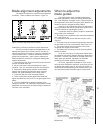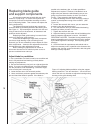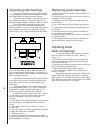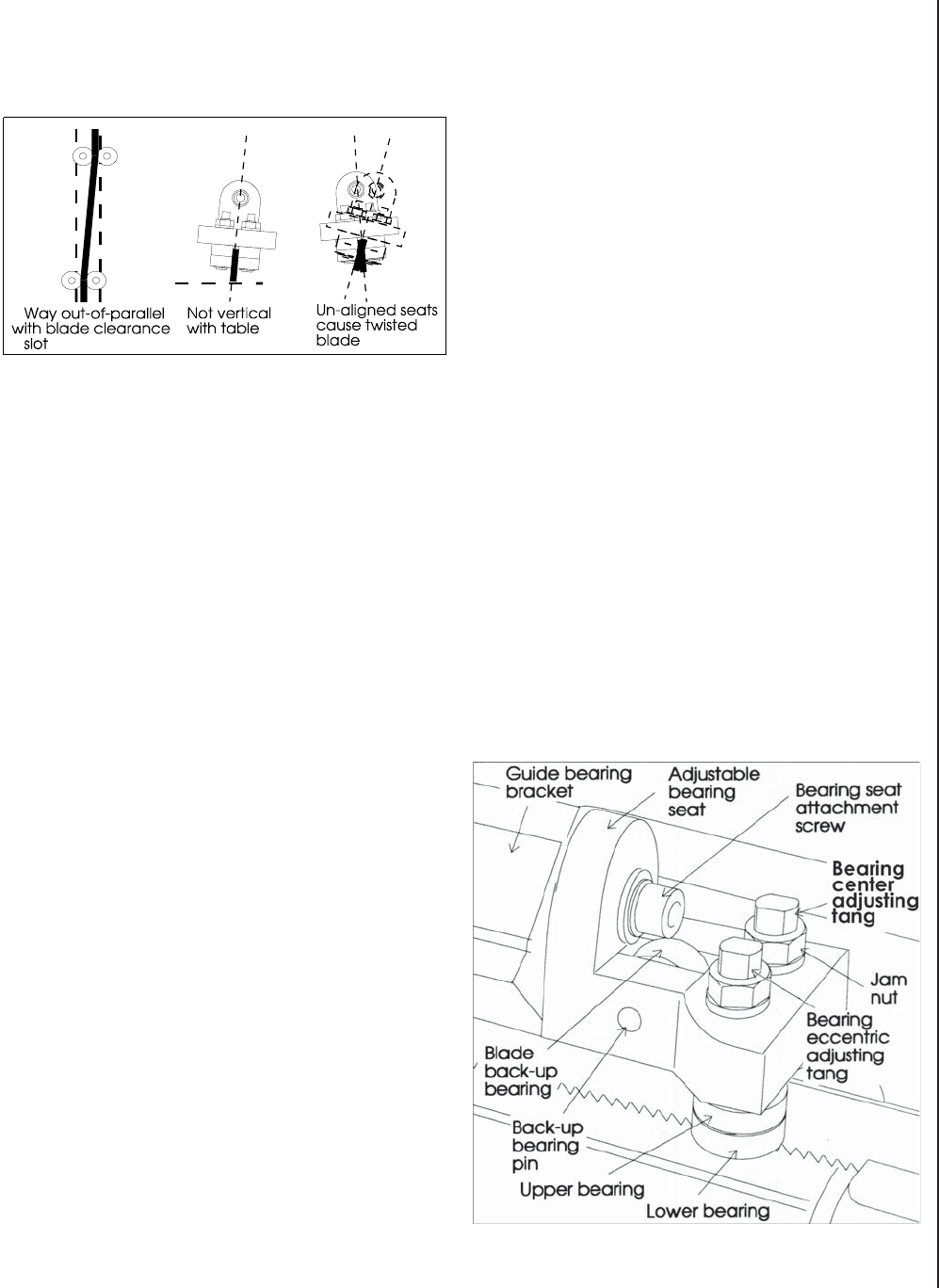
15
Blade alignment adjustments
The blade can suffer from several out-of-adjustment
conditions. These conditions are shown in Figure 10.
Figure 11: Nomenclature for blade guide assembly and its
components
Figure 10: Blade alignment fault conditions
Establishing a reference surface for blade adjustment
So long as major changes and adjustments to the
blade guide system are not made, you will not have to
perform the following procedure. However, assuming the
"worst possible case" -- someone dismantles all of the
guides and components -- here is how to determine a
baseline reference surface for subsequent blade guide
system adjustments.
1. Disconnect the saw from its electrical power source to
prevent accidental start-ups.
2. Be sure the blade is fully tensioned and in good
condition. Use of a new blade is best for this operation.
3. Remove the blade guide, brackets, and all blade
guiding and supporting components which normally
capture and guide the blade at the cutting postion.
4. Lower the saw arm to full horizontal position.
5. Place a machinists square against the blade and
adjust the stationary vise jaw so it is at right angles to the
blade.
6. You have established a reference surface at the
stationary vise face. All subsequent adjustments of blade
parallelism and vertical can be made using the stationary
vise face or the saw table.
When to adjust the
blade guides
The blade guides, when installed at the factory,
have been adjusted for maximum sawing effectiveness
and, if not disturbed, damaged or worn, should require no
field adjustment other than moving the guide brackets as
needed to clear the workpieces being sawed.
However, if the components get out of alignment or
need replacement the following instructions give you the
complete method for adjusting the system.
In particular, there five planes, angles or clearances
which need to be considered.
1. The blade must run parallel to the saw blade clearance
slot. (See Figure 10.)
2. The blade must be square with the vise jaws. (See
Figure 2.)
3. The blade must the vertical and square with respect to
the saw table and must not be twisted. (See Figure 10.)
4. The guide bearings must provide the correct side
clearance and support for the blade.
5. The blade back-up bearing must be correctly placed
behind the blade.
As we say, so long as no component relationships
are disturbed, the factory settings should be adequate to
your tasks. However, parts wear or damage does occur.
When parts are replaced, adjustment of the blade
positioning will almost certainly be necessary.
Of course, regardless of whether or not a compo-
nent has been disturbed or replaced, at any time you are
not getting the cutting action or accuracy you expect, or
whenever the troubleshooting chart recommends it, you
can and should check the blade support components.








